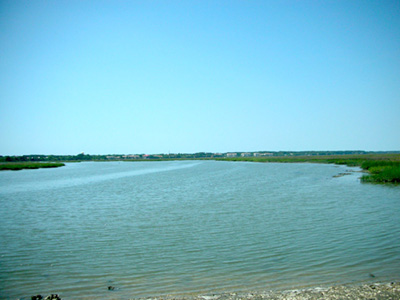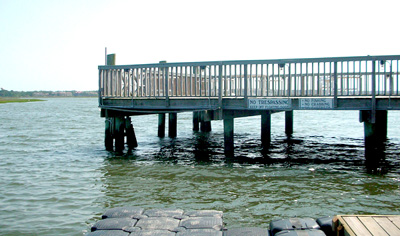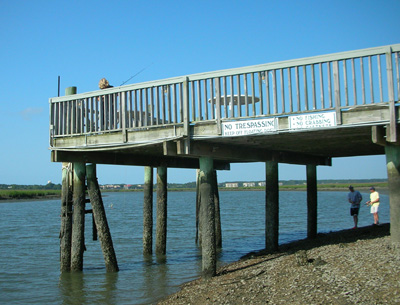




100 billion tons of water is carried into the Bay of Fundy (between Nova Scotia and New Brunswick) twice each day. This is an extreme example of the effect the tides have on the sea. No inch of the ocean, even the deepest canyons are left unaffected by this water movement.
Here on Hilton Head, our tides are no where near the extreme 40-50 feet seen in the Bay of Fundy. They are substantial, as any one who has walked the beach on a low tide can attest. The highest flood tide (which means high or rising tide) can be 8 to 10 feet, and the lowest ebb tide (low or falling tide ) can be -1 to -2 feet. These are the extremes for the year. These very high and very low tides are called spring tides. They occur twice each month and have nothing to do with the season, it's referring to the fact that the water is springing, getting extra high and extra low.
These spring tides happen twice each month, on a new moon and a full moon. This is when the sun and moon line up with the planet when this occurs the sun provides extra gravitational pull to make the water higher on the spartina grass and lower on the oyster beds , strong currents and grounding for unwary boaters. My beard grows faster, and I need less sleep, to mention only a couple of the many effects I have noticed.
On the other end of the spectrum we have neap tides these occur approximately seven days after the full moon or new moon or on the quarter moons. These flood tides can be as little as 4 to 5 feet, the shortest high tides of the year. The highest low tide will occur with an extra 1 to 2 feet of water in the creek, and not as much beach for the sunbathers as usual, although they will have it for a longer time.
This is because on the quarter moons the sun, moon and earth are at the apex of a triangle. When this happens the sun is as far away from being lined with up the moon as possible, and the sun has a neutralizing effect on this gravitational pull.
A good way to visually understand this would be to go out seven days after the new moon and watch the sun set, when you are looking at the sun on horizon, look directly overhead and you will see a half moon. You can see the sun and moon are as far away from being lined up as possible. This can also be viewed seven days after a full moon but you would have to see the sun rise. So our tidal range here is 6 to 9 feet. We only have these 10-foot tides a few times a year, neaps are generally around 6-7 foot and spring tides 8-9 foot.
The other type of tide you could have is a mean tide. These are average tides, somewhere in the middle of springs and neaps. There are a couple of reasons you might want to know about mean tides. Ever look at a nautical chart? The first things you notice are numbers all over where the water is. These numbers are depths; these depths are measured in mean low water, (MLW) which means on spring low tides there is less water there than the chart is indicating. This is important when trying to keep your boat off the bottom.
Ever wonder who owns the beach in front of you hotel or villa? The law in South Carolina states that everything from ten feet above mean high water (MHW) belongs to the state. So the only thing waterfront property owners really own is access to the water. All those beautiful beaches, creeks, sounds and salt marsh are public domain. Have you checked your tide table lately? Have you noticed that they don't come at the same time every day?
There is a rhyme and reason for this. The tides are based on the lunar month. The lunar month is how long it takes the moon to go around the earth. Everyone knows that is 28 days, what most don't know is that is not exactly 28 days. If it were the tides would come at the same time every day. The cycle is 28 days and about 52 min. this 52-min. difference makes the tides come approximately an hour later each day.
Because the tides are based on the movement of the heavenly bodies they are incredibly predictable. Tide charts and predictors can show you the high and low tides at any point in the future. To find out the tides for Hilton Head Island right now visit Hilton Head Island Tides on your web browser or smartphone.
Living and working around the tides most of my life has made me realize that everything in and around the waters where we live is in one way or another revolving around the tides, me included. It's the spring tides when it's most noticeable and interesting.